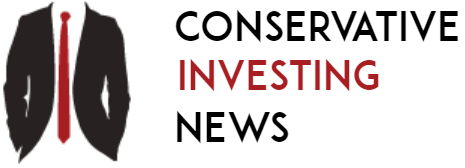Federal Reserve rate cuts in September and November have made many Americans double-check the rates on the best certificates of deposit (CDs). It’s true that when the Fed cuts its benchmark rate, even the best CD rates will likely go down. But CDs can still be a good choice for your savings if you know where to look and understand the tradeoffs.
Let’s look at the story behind the best CD rates and why you might (or might not) want to open a CD soon.
Why CD rates go down after Fed rate cuts
At its latest meeting on Nov. 7, 2024, the Federal Reserve cut its effective federal funds rate by 0.25%. This rate cut made the effective federal funds rate 4.50% to 4.75%.
This rate is important for many people’s everyday finances because it’s the rate at which banks borrow from each other. Everyday, banks are lending to and borrowing from each other. They use the Fed’s short-term effective federal funds rate as the cost of money. These short-term interest rates drive much of the banking system and impact the APYs you can get on your savings account and CDs.
Our Picks for the Best High-Yield Savings Accounts of 2024
|
American Express® High Yield Savings APY 4.00%
Rate info
Min. to earn $0
Member FDIC.
|
APY 4.00%
Rate info
|
Min. to earn $0 |
|
Capital One 360 Performance Savings APY 4.00%
Rate info
Min. to earn $0
Member FDIC.
|
APY 4.00%
Rate info
|
Min. to earn $0 |
|
CIT Platinum Savings APY 4.55% APY for balances of $5,000 or more
Rate info
Min. to earn $100 to open account, $5,000 for max APY
Member FDIC.
|
APY 4.55% APY for balances of $5,000 or more
Rate info
|
Min. to earn $100 to open account, $5,000 for max APY |
Banks make money by paying less for your CD rates
Banks don’t want to pay a higher interest rate to savers (like you) than they can earn from borrowers (like other banks, credit card customers, or mortgage borrowers). So when the short-term effective federal funds rate goes down, banks also tend to cut the rates they pay to depositors. This is a big part of how banks make money — by paying lower interest to depositors (savings account and CD customers) than they earn from interest on loans.
For this basic reason of profitability, CD rates are (probably) always going to be lower than the effective federal funds rate. Every time the Fed cuts interest rates, the best CD rates are going to go down, too.
However, you can still earn a good yield from the best CD rates from banks like Quontic, even after the Fed’s November rate cut. Click here to learn more about the 12-month Quontic CD (4.00% APY) — and you only need a $500 minimum deposit.
Why you should open a CD now
One of the best reasons to open a CD is because you have a decent amount of cash, outside of your short-term emergency fund, and you want to earn the highest possible return on your savings. Locking in a CD can give you a fixed rate of interest with the safety of FDIC insurance.
If you believe that the Fed is going to continue cutting interest rates, right now could be a good time to open a CD. That’s because if you open a CD right now and lock in an APY of 4.00% (for example), you’ll keep earning that same APY for the rest of the CD’s term — even if the Fed cuts interest rates by another 0.25% to 1.00% in the coming months.
Even the best savings accounts don’t have fixed APYs. Savings account APYs can fluctuate at any time based on the bank’s own decision making or in response to changes to the Fed’s interest rates. Opening a CD can help protect your savings from future Fed rate cuts.
Why you might NOT want to open a CD
CDs aren’t the right choice for every saver or situation. If you don’t already have a solid emergency fund (with at least three months’ worth of necessary expenses in the bank), you probably shouldn’t open a CD. And don’t open a CD if you’re saving for a specific near-term goal, like a new car or a down payment on a house.
Here’s why: CDs charge early withdrawal penalties. When you open a CD, you’re agreeing to leave your money in that account for the full term of time — whether that’s three months, six months, one year, or five years. The bank is counting on you to leave your money deposited.
But if your financial plans change and you need your cash sooner than expected, you’re in trouble. The bank is going to make you pay early withdrawal penalties on the money in your CD, which can gobble up some or all of the interest you earned.
For this reason, CDs are not truly “risk-free.” Unless you have rock-solid financial stability, you just never know if or when you’re going to need to crack open that CD piggy bank.
Even if the best CDs offer higher yields than the best savings accounts, savings accounts have one big advantage: liquidity. You can take your cash out of a savings account anytime without losing one dollar of the interest you’ve earned.
Bottom line
Every time the Fed cuts interest rates, the best CD rates and savings account APYs are likely to go down. But opening a CD can still be worth it. Just make sure you understand the risks of early withdrawal penalties and plan carefully for how you want to use your cash.
The best place for your emergency fund or for any money that you might need next week, next month, or even next year is likely a high-yield savings account.
